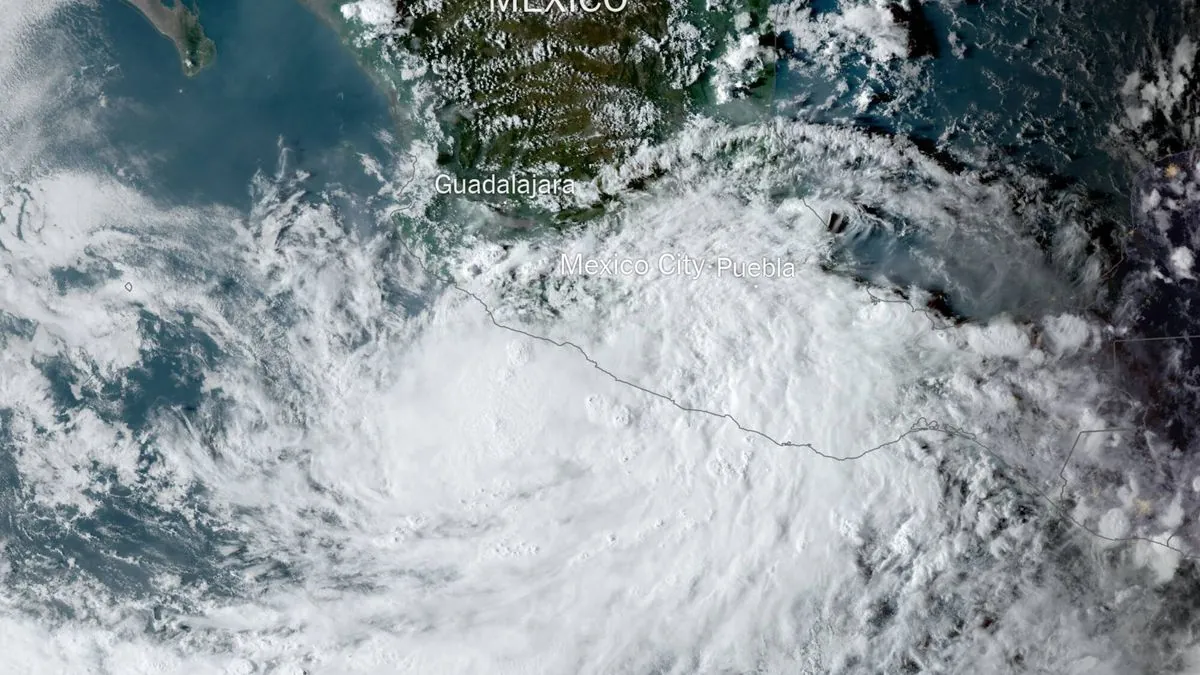Tropical Storm John, having already impacted Mexico's southern coastline, is now poised for a second assault on the country's Pacific region. The U.S. National Hurricane Center anticipates John's renewed landfall on Wednesday evening, September 27, 2024, potentially as a hurricane.
John's initial touchdown on Monday, September 23, as a major hurricane, resulted in severe flooding and landslides. The storm's aftermath left at least five individuals dead, including a 10-year-old boy and his mother in Tlacoachistlahuaca, Guerrero state. This region, part of Mexico's Costa Chica, is known for its high poverty rates and social inequality.
The storm's impact extended beyond human casualties. Approximately 100,000 homes lost power, while trees, power poles, and roofs succumbed to John's fury. As John retreated to the Pacific, it left behind a trail of intense rainfall across several states, affecting major ports and beach resorts.
Fermin Damian Adame, a civil protection meteorologist, explained the storm's resurgence:
"The ocean's surface temperatures are favorable to feeding this storm."
Adame predicts another round of intense rainfall lasting until Friday, September 29.
The Miami-based National Hurricane Center, established in 1965, has issued warnings of potential "catastrophic" flash flooding and mudslides across four states along Mexico's Pacific coast. This region, part of the "Ring of Fire," is particularly vulnerable to such natural disasters due to its seismic and volcanic activity.
Acapulco, a city still reeling from the devastation caused by Hurricane Otis in 2023, faces renewed threat. State authorities have identified around 4,000 homes at risk in this once-popular resort town, urging residents in low-lying areas to seek shelter immediately. The Port of Acapulco, an important economic hub, may face significant disruptions.
The rapid intensification of hurricanes, a phenomenon linked to climate change, poses increasing challenges for coastal communities. Warmer sea temperatures provide more energy for tropical cyclones, often catching forecasters off guard. This was evident in Hurricane Otis's unexpected strengthening to a Category 5 storm in less than 24 hours, resulting in over 50 fatalities and an estimated $15 billion in damages.
Mexico's Pacific coast has a history of severe hurricanes, including Patricia in 2015. The country's National Meteorological Service, founded in 1877, works in conjunction with international agencies to monitor and forecast these storms. Mexico employs a color-coded alert system for tropical cyclone warnings, part of its Civil Protection system established in 1986 after a major earthquake.
As John approaches, residents and authorities brace for its impact. The storm's potential to cause storm surges, raising sea levels and flooding coastal areas, remains a significant concern. The combination of Mexico's mountainous topography near the coast and the warm waters of the Eastern Pacific creates conditions that can enhance rainfall and storm intensity.
The unfolding situation with Tropical Storm John underscores the increasing unpredictability and intensity of tropical cyclones in the era of climate change. As communities along Mexico's Pacific coast prepare for John's second act, the event serves as a stark reminder of the need for improved disaster preparedness and climate resilience strategies.
